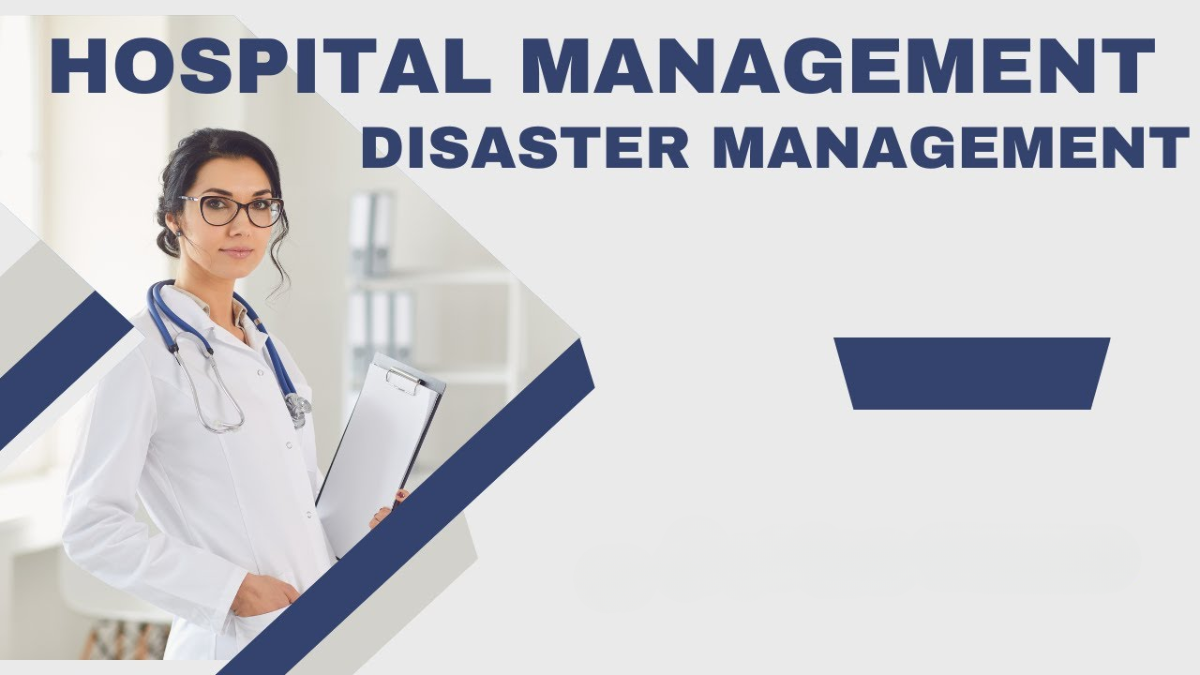Hospital emergency preparedness and disaster management are critical components of healthcare systems. Hospitals must be ready to respond effectively to natural disasters, accidents, pandemics, and mass casualty incidents. A structured disaster management plan ensures patient safety, efficient resource utilization, and continuity of healthcare services during emergencies.
Importance of Emergency Preparedness in Hospitals
- Rapid Response: Enables immediate action during crises to save lives.
- Patient Safety: Reduces morbidity and mortality during disasters.
- Resource Management: Efficient allocation of staff, equipment, and medications.
- Continuity of Care: Ensures essential services are maintained during emergencies.
- Community Support: Hospitals serve as primary responders in local disaster scenarios.
Key Components of Hospital Disaster Management
1. Risk Assessment
- Identifying potential threats such as earthquakes, floods, fires, chemical spills, or epidemics.
- Evaluating the hospital’s structural safety, critical equipment, and supply availability.
2. Emergency Response Plan
- Defined protocols for staff roles, evacuation routes, and patient triage.
- Communication plan for internal and external coordination.
3. Staff Training and Drills
- Regular emergency drills for medical, nursing, and support staff.
- Training on mass casualty management, triage, first aid, and evacuation.
4. Triage and Patient Management
- Categorization of patients based on severity to prioritize treatment.
- Dedicated areas for critical, moderate, and minor cases.
5. Supply and Resource Management
- Stocking essential medications, surgical supplies, blood products, and PPE.
- Backup generators, oxygen, and water supply for uninterrupted services.
6. Communication Systems
- Internal communication channels for staff coordination.
- External communication with emergency services, authorities, and media.
7. Psychological Support
- Counseling services for patients, families, and staff affected by disasters.
- Stress management and mental health programs for hospital personnel.
Role of Hospital Emergency and Disaster Staff
- Emergency Physicians: Lead patient management and triage.
- Nurses: Assist in critical care, patient transport, and emergency procedures.
- Disaster Management Officers: Coordinate planning, drills, and response strategies.
- Support Staff: Ensure logistics, equipment readiness, and facility safety.
- Security Personnel: Maintain order, assist in evacuations, and protect hospital property.
Equipment and Technology in Hospital Disaster Management
- Emergency medical kits, stretchers, and mobile resuscitation units.
- Portable ventilators and oxygen cylinders for patient support.
- Backup generators, water, and fuel storage for uninterrupted operations.
- Communication tools including radios, satellite phones, and mass notification systems.
- Incident command systems for real-time decision-making and coordination.
Challenges in Hospital Emergency Preparedness
- Managing high patient volumes during mass casualty incidents.
- Ensuring sufficient medical supplies and backup resources.
- Training all staff for diverse emergency scenarios.
- Maintaining communication with external emergency agencies.
- Handling psychological stress among staff and patients during disasters.
Future of Hospital Disaster Management
- AI-Powered Risk Prediction: Using data analytics to anticipate and prepare for disasters.
- Tele-Disaster Coordination: Remote monitoring and guidance during emergencies.
- Advanced Triage Systems: Automated patient tracking and prioritization.
- Disaster Simulation Training: Virtual reality-based training for realistic scenarios.
- Integrated Regional Emergency Networks: Collaboration between hospitals, government, and NGOs for coordinated response.
FAQs on Hospital Emergency Preparedness and Disaster Management
1. Why is emergency preparedness important in hospitals?
It ensures rapid response, patient safety, and continuity of healthcare during crises.
2. Who is responsible for hospital disaster management?
Emergency physicians, nurses, disaster management officers, support staff, and security personnel.
3. What types of disasters do hospitals prepare for?
Natural disasters, fires, chemical accidents, epidemics, pandemics, and mass casualty incidents.
4. How do hospitals manage mass casualties?
Through triage, dedicated treatment areas, and prioritization based on severity.
5. What is included in an emergency response plan?
Staff roles, evacuation procedures, communication systems, and resource allocation protocols.
6. How are hospital staff trained for emergencies?
Regular drills, simulation training, first aid courses, and specialized emergency workshops.
7. What equipment is essential for disaster management in hospitals?
Emergency kits, stretchers, portable ventilators, backup generators, and communication systems.
8. How do hospitals handle psychological stress during disasters?
Through counseling, mental health programs, and stress management initiatives for patients and staff.
9. Can technology improve hospital disaster management?
Yes, AI prediction, tele-disaster coordination, automated triage, and simulation training enhance efficiency.
10. What is the future of hospital emergency preparedness?
AI-powered risk prediction, tele-disaster services, virtual reality training, advanced triage, and regional collaboration networks.

